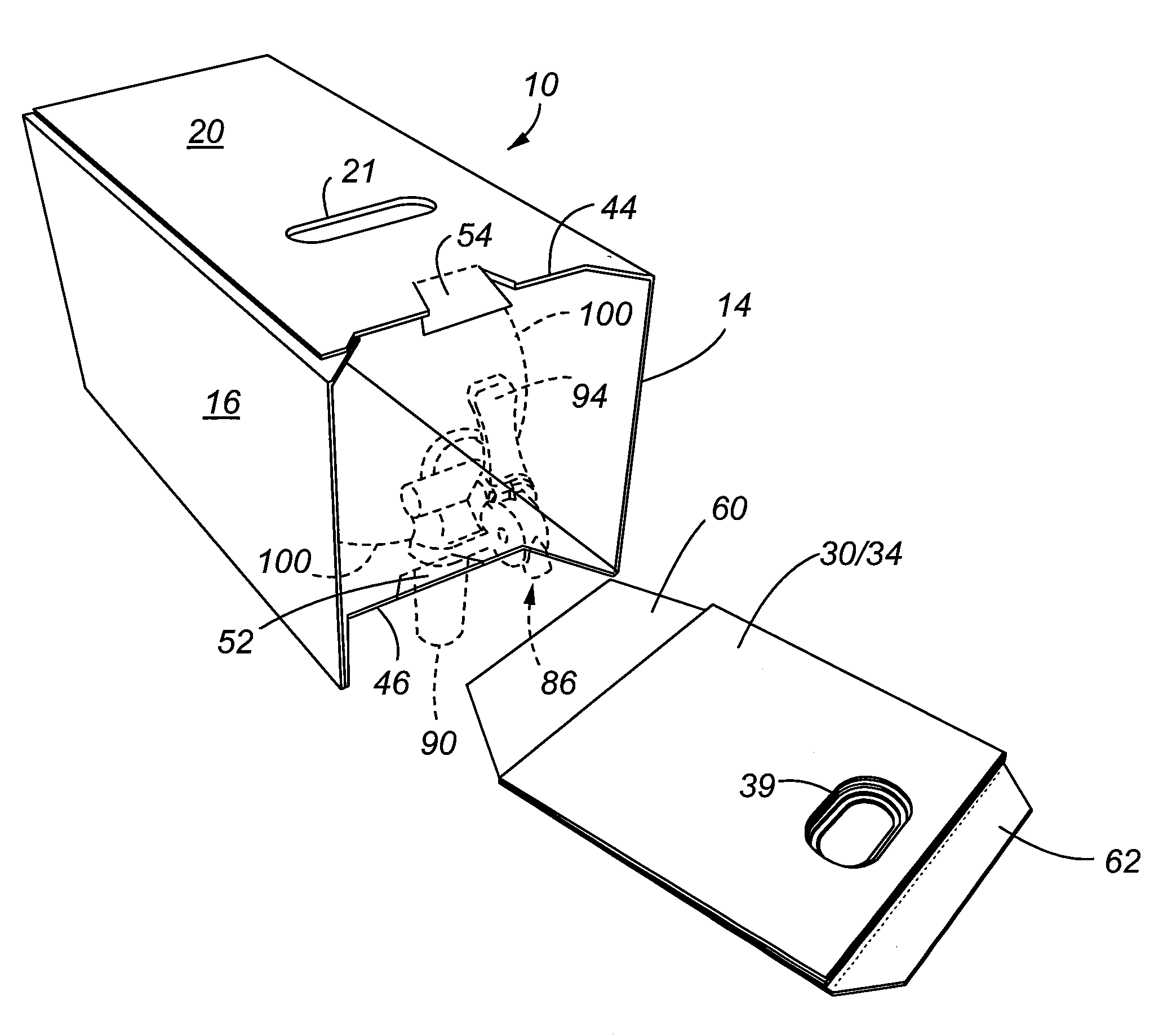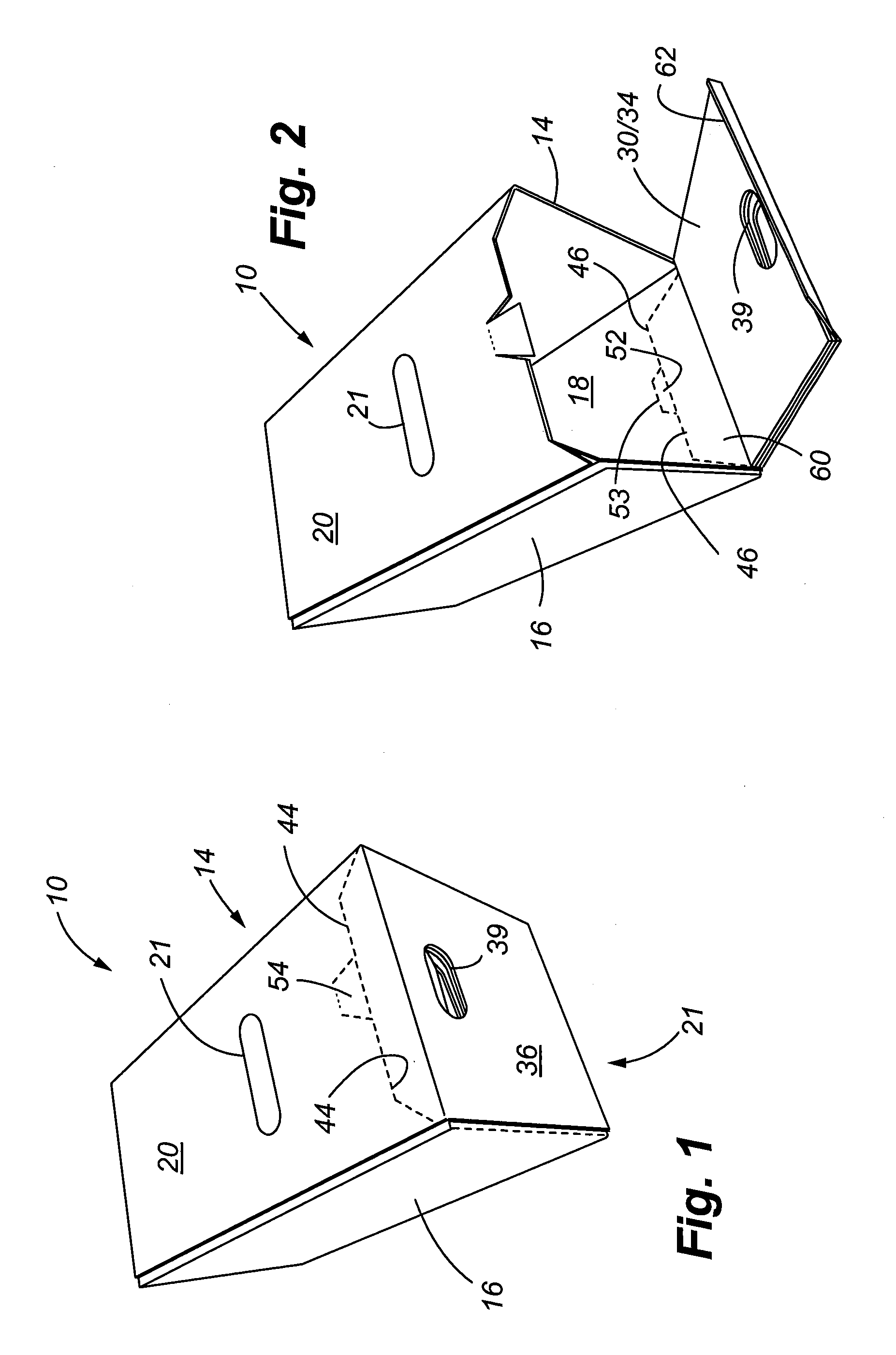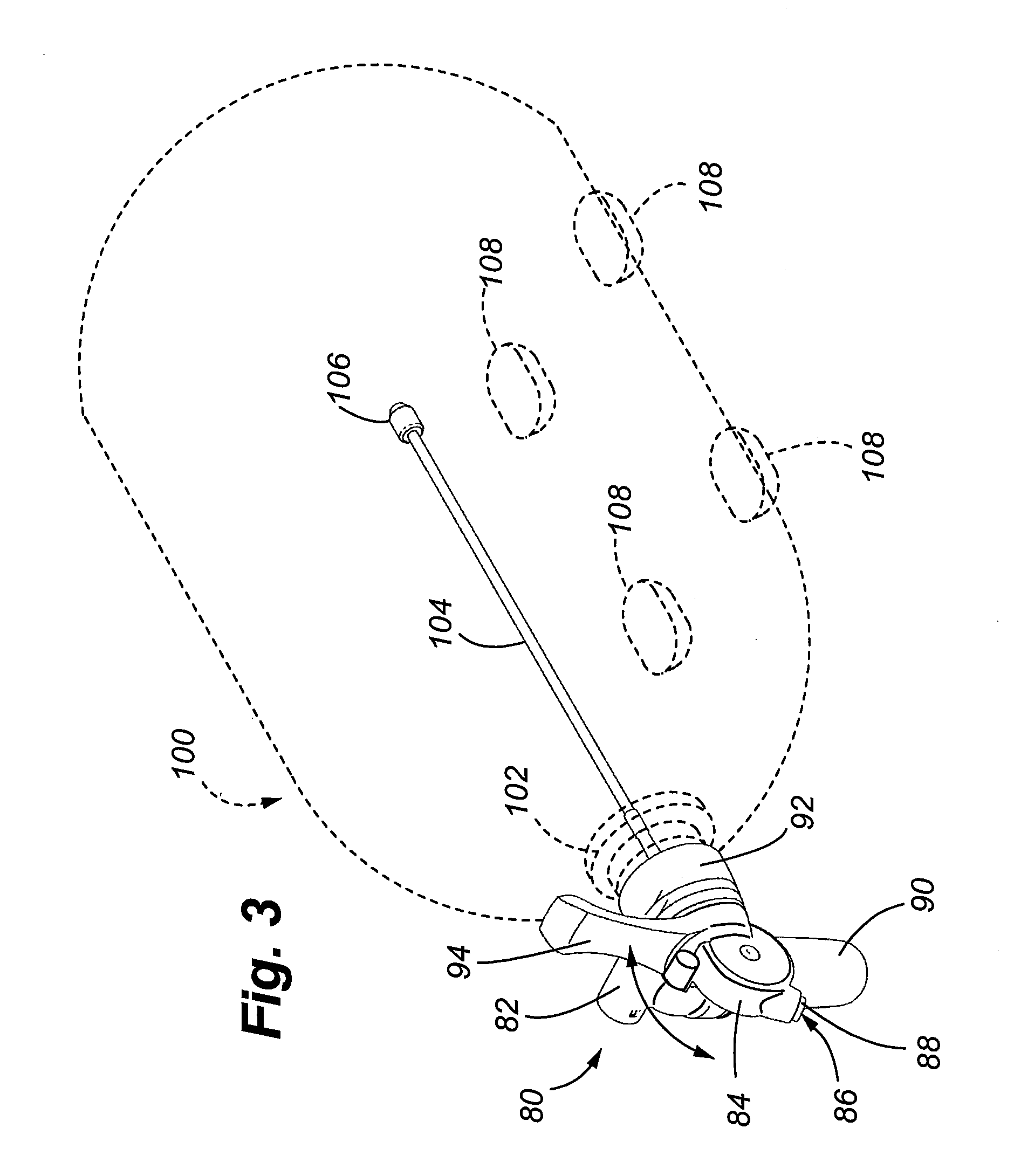Regulated fluid dispensing system packaging
- Summary
- Abstract
- Description
- Claims
- Application Information
AI Technical Summary
Benefits of technology
Problems solved by technology
Method used
Image
Examples
Embodiment Construction
[0014]Referring to FIGS. 1 and 2, the packaging container 10 of the present invention is illustrated. The exterior surface of the packaging is defined by an outer top panel 20, an opposed bottom panel 18, and an opposed pair of side panels, shown as first side panel 14 and second side panel 16.
[0015]Referring also to FIG. 5, the plan view of the packaging container 10 illustrates each of the panels and flaps of the packaging container prior to assembly of the packaging. Referring specifically to this FIG. 5, the packaging 10 further includes an inner top panel 12, which resides under the outer top panel 20 when the packaging is assembled. Slot 13 of the inner panel 12 aligns with the slot 21 formed on the outer top panel 20 to form a top carry opening. The back or rear panel of the packaging includes a plurality of closing flaps, namely, a first rear side closing flap 22, a rear bottom closing flap 24, a second rear side closing flap 26, and a top rear closing flap 28. When the pack...
PUM
 Login to View More
Login to View More Abstract
Description
Claims
Application Information
 Login to View More
Login to View More - R&D
- Intellectual Property
- Life Sciences
- Materials
- Tech Scout
- Unparalleled Data Quality
- Higher Quality Content
- 60% Fewer Hallucinations
Browse by: Latest US Patents, China's latest patents, Technical Efficacy Thesaurus, Application Domain, Technology Topic, Popular Technical Reports.
© 2025 PatSnap. All rights reserved.Legal|Privacy policy|Modern Slavery Act Transparency Statement|Sitemap|About US| Contact US: help@patsnap.com



